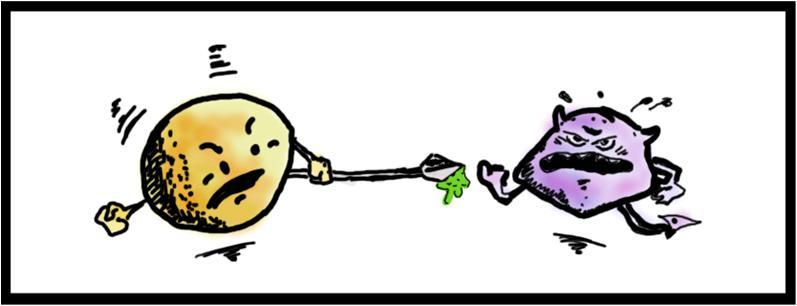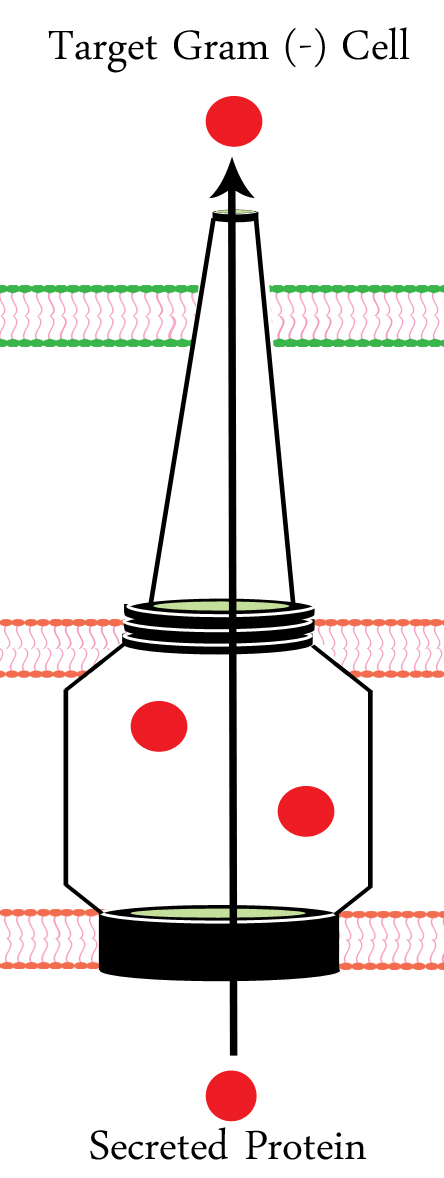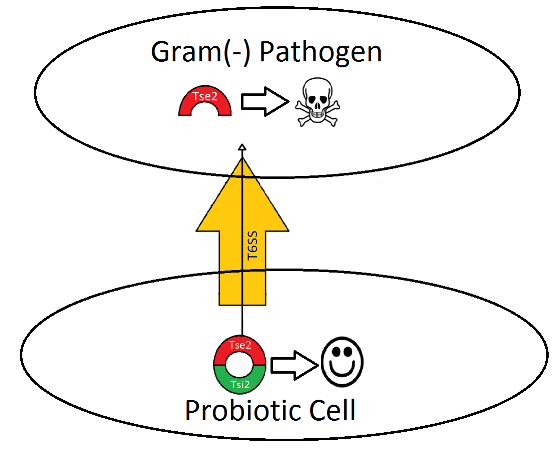Team:Washington/Gram Negative
From 2010.igem.org
(→Probiotics in a Gram-Negative Organism) |
|||
| Line 25: | Line 25: | ||
</html> | </html> | ||
<!---------------------------------------PAGE CONTENT GOES BELOW THIS----------------------------------------> | <!---------------------------------------PAGE CONTENT GOES BELOW THIS----------------------------------------> | ||
| - | = | + | =New and Effective Killer of Gram-Negative Bacteria= |
[[Image: Washington Get away.jpg]] | [[Image: Washington Get away.jpg]] | ||
| - | As time passes, it is becoming | + | As time passes, it is becoming increasingly apparent that the old generation of small molecule antibiotics are becoming out dated. Pathogens are continually evolving resistance to currently used antibiotics, and the discovery or modification of antibiotic treatments are slow to catch up. This continual evolution is causing the antibiotics to be less effective if not completely futile. Another problem with these antibiotics is that they do no differentiate between pathogenic and non-pathogenic bacteria; they kill both. There are many common diseases caused by gram-negative bacteria which inhabit the human gut, such as, but not limited to:''Vibrio cholerae''(cholera), ''Shigella'' (dysentary), and ''Salmonella'' (food poisoning). When these diseases are contracted antibiotics are most often given in hopes that they will kill the pathogenic bacteria. Quite often these antibiotics can cause a diverse range of side effects because they also end up killing other bacteria found naturally in the gut. Most of the bacteria in the gut is actually helpful. It aids the body in digestion, production of vitamins such as vitamin K, and competitively excludes pathogenic invaders. Both the problems of resistance and non-specificity could be lessened by an antibacterial agent that selectively kills pathogenic bacteria. This would limit the chance of the development of resistance by limiting exposure, and would drastically decrease damage to the helpful gut flora. The goal of this project is to turn the Tse2/Type VI secretion system, toxin/injection system, into a probiotic that specifically targets pathogenic gram-negative bacteria that is active only when that specific bacteria is present. |
=The Type VI Secretion System= | =The Type VI Secretion System= | ||
Revision as of 07:08, 16 October 2010
New and Effective Killer of Gram-Negative Bacteria
 As time passes, it is becoming increasingly apparent that the old generation of small molecule antibiotics are becoming out dated. Pathogens are continually evolving resistance to currently used antibiotics, and the discovery or modification of antibiotic treatments are slow to catch up. This continual evolution is causing the antibiotics to be less effective if not completely futile. Another problem with these antibiotics is that they do no differentiate between pathogenic and non-pathogenic bacteria; they kill both. There are many common diseases caused by gram-negative bacteria which inhabit the human gut, such as, but not limited to:Vibrio cholerae(cholera), Shigella (dysentary), and Salmonella (food poisoning). When these diseases are contracted antibiotics are most often given in hopes that they will kill the pathogenic bacteria. Quite often these antibiotics can cause a diverse range of side effects because they also end up killing other bacteria found naturally in the gut. Most of the bacteria in the gut is actually helpful. It aids the body in digestion, production of vitamins such as vitamin K, and competitively excludes pathogenic invaders. Both the problems of resistance and non-specificity could be lessened by an antibacterial agent that selectively kills pathogenic bacteria. This would limit the chance of the development of resistance by limiting exposure, and would drastically decrease damage to the helpful gut flora. The goal of this project is to turn the Tse2/Type VI secretion system, toxin/injection system, into a probiotic that specifically targets pathogenic gram-negative bacteria that is active only when that specific bacteria is present.
As time passes, it is becoming increasingly apparent that the old generation of small molecule antibiotics are becoming out dated. Pathogens are continually evolving resistance to currently used antibiotics, and the discovery or modification of antibiotic treatments are slow to catch up. This continual evolution is causing the antibiotics to be less effective if not completely futile. Another problem with these antibiotics is that they do no differentiate between pathogenic and non-pathogenic bacteria; they kill both. There are many common diseases caused by gram-negative bacteria which inhabit the human gut, such as, but not limited to:Vibrio cholerae(cholera), Shigella (dysentary), and Salmonella (food poisoning). When these diseases are contracted antibiotics are most often given in hopes that they will kill the pathogenic bacteria. Quite often these antibiotics can cause a diverse range of side effects because they also end up killing other bacteria found naturally in the gut. Most of the bacteria in the gut is actually helpful. It aids the body in digestion, production of vitamins such as vitamin K, and competitively excludes pathogenic invaders. Both the problems of resistance and non-specificity could be lessened by an antibacterial agent that selectively kills pathogenic bacteria. This would limit the chance of the development of resistance by limiting exposure, and would drastically decrease damage to the helpful gut flora. The goal of this project is to turn the Tse2/Type VI secretion system, toxin/injection system, into a probiotic that specifically targets pathogenic gram-negative bacteria that is active only when that specific bacteria is present.
The Type VI Secretion System
The Type 6 Secretion System is an injection mechagnism found in many gram (-) bacteria, including Pseudomonas aeruginosa, but not E. coli. The T6SS acts much like a spear, physically puncturing the cell membrane and providing a channel through which proteins can be inserted into the punctured cell. The T6SS is physically incapable of puncturing gram (+) cell walls, or the cell membrane of eukaryotic cells. Therefore, our probiotic would be unable to harm either human cells, or helpful gram (+) bacteria.

Tse2/ Tsi2 toxin/antitoxin system
In Pseudomonas aeruginosa, one of the major proteins secreted by the Type VI Secretion System is the toxic protein Tse2. Normally, Tse2 forms a complex with Tsi2, a protien coexpressed with Tse2 that serves as an antitoxin. Before Tse2 is secreted into the target cell, Tsi2 unbinds with Tse2, and Tse2 is secreted into the target cell by the Type VI Secretion System. The presence of Tse2 without the presence of Tsi2 causes the target cell to die. By activating Tse2 and Tsi2 production only when a pathogen is present, we could make it so that our probiotic only kills gram(-) cells when a specific gram (-) pathogen is present.
 "
"

